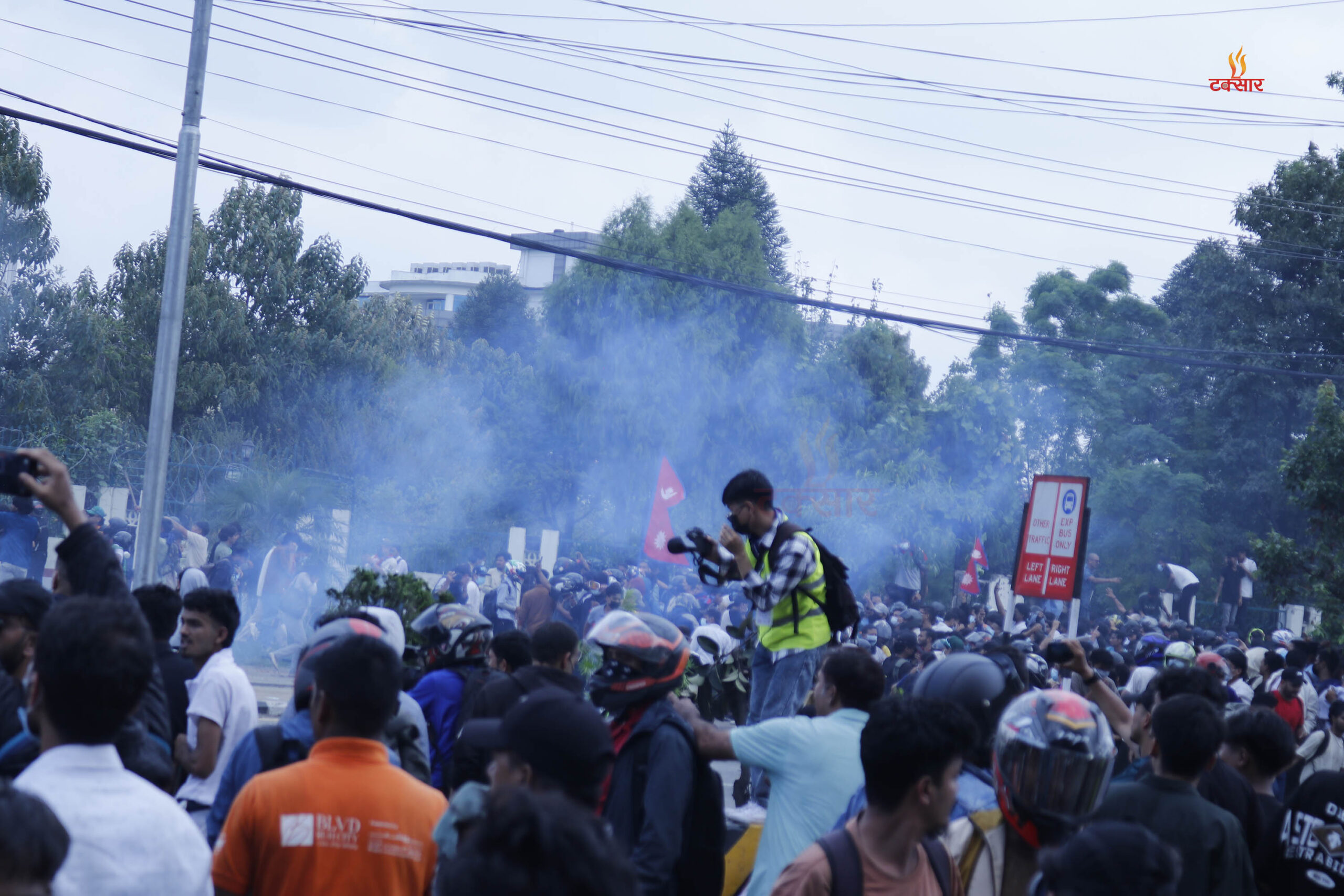Kathmandu, September 8 —
Nepal has been gripped by chaos as the ongoing Gen Z-led movement against corruption, social media restrictions, and political elitism turned violent on Monday, leaving at least 14 people dead and dozens injured. The protests, spearheaded by the group “Nepalese Students for Justice”, began at Maitighar Mandala and escalated as demonstrators marched towards the Parliament building via New Baneshwor.
Authorities have imposed a curfew in key parts of Kathmandu and deployed the army after violent clashes erupted between protesters and security forces. The unrest has since spread to other major cities, including Damak and Biratnagar.
How It Started
Tensions began rising after the government’s decision on August 28 to impose a seven-day ultimatum to ban social media platforms including Facebook, TikTok, Reddit, and Discord, citing “national security concerns.” The move sparked outrage among Nepal’s Gen Z population — those born between 1997 and 2012 — who viewed the ban as an assault on freedom of expression.
By 9 a.m. Monday, thousands of protesters gathered at Maitighar Mandala, chanting slogans against corruption, lavish lifestyles of political leaders, and restrictions on free speech. The crowd then marched towards the Parliament, breaking through restricted areas, which prompted security forces to use water cannons, tear gas, and rubber bullets to disperse them.
Violence Escalates
According to eyewitnesses, protesters retaliated by throwing paper, bottles, and tree branches at the police and set fire to Gate No. 2 of the Parliament building, causing partial damage to the structure.
- 13 people were confirmed dead at the scene, according to the Ministry of Health and Population.
- An additional protester succumbed to injuries at Civil Hospital, raising the death toll to 14.
- At least 15 security personnel and dozens of protesters have been injured.
Protests Spread Nationwide
The protests are no longer confined to Kathmandu.
- In Damak, demonstrators seized the municipal office and set several vehicles ablaze.
- In Biratnagar, protesters burned tires and blocked major highways.
- The Kathmandu District Administration Office has imposed a curfew in Maitighar, New Baneshwor, Tinkune, and Shankhamul until 10 p.m.
Assistant Chief District Officer Muktiram Rijal said that “external forces” may have infiltrated the movement and confirmed that the Nepal Army has been mobilized to restore order.
Demands of the Gen Z Movement
Protest leaders have laid out several key demands:
Immediate lifting of the social media ban
- Appointment of independent commissioners in the Commission for the Investigation of Abuse of Authority (CIAA)
- A pledge from senior political leaders not to seek the premiership again
- A parliamentary inquiry into the lavish lifestyles of politicians’ children
The movement has drawn inspiration from similar youth-led uprisings in Sri Lanka (2022), Bangladesh (2024), and Indonesia (2025), gaining massive traction on social media under the hashtags #NepoBaby and #GenZRevolt.
Public Figures React
Kathmandu Mayor Balen Shah, Kulman Ghising, singer Prakash Saput, actors Pal Shah and Anmol KC, and the band Nepathya have all publicly supported the protests.
However, as violence escalated, the organizing group Gen Z Nepal issued a statement urging demonstrators to remain calm and return home safely.
Calls for Dialogue
Political analysts warn that continued violence could undermine the core objectives of the movement. They are urging the government to:
- Revoke the social media ban
- Initiate immediate dialogue with protest leaders
- Avoid excessive use of force
Over 20 rights organizations, including Press Centre Nepal and the Digital Freedom Coalition, have condemned the government’s actions, calling the restrictions unconstitutional.

























